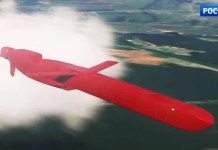For the revolutionary method of Cancer Treatment via Immunotherapy, American James Allison and Japanese Tasuku Honjo were awarded Nobel Prize for the use of T cells. “The epochal discoveries of these two laureates have become a turning point in our fight against cancer,” the Nobel Committee’s decision says. Developed by Allison and Honjo, the Cancer treatment techniques “radically changed the outcome for some groups of patients with advanced cancer.”
- Cancer Treatment in India – Top Oncologists Suggest New Approach- Dr Jawahar Ticku Explains
- Cancer Linked to Low Income, Unhappiness – IIT Research
Cancer Treatment: The New Approach
Usually, our immune system independently looks for mutated cells in the body and destroys them, preventing them from multiplying. However, cancer cells have found a way to bypass this natural defence, which allows tumours to grow rapidly.
Many cancers do this by activating a mechanism that usually “soothes” or “brakes” immune cells after an attack. So in a healthy body, the strength and duration of the immune response is regulated.
Allison and Honjo learned to “deceive” cancer cells and prevent them from blocking the immune response. This made a real revolution in therapy and formed the basis for a whole new class of drugs.
So far, these medicines have many side effects, but they have proven effective in combating oncology. Sometimes it is possible to cure even patients at a late stage of cancer, who were previously considered incurable.
Fight Against Cancer
The fact that for the fight against cancer can mobilize the immunity of the patients themselves, scientists first thought about more than 100 years ago. However, it was only in the 1990s that a real breakthrough was made in this area.
American James Allison discovered the so-called immune control points (ICT), a natural mechanism that inhibits our immunity by “calming” the T lymphocytes responsible for recognizing and destroying foreign and mutated cells.
If this mechanism is broken, then the body begins to destroy itself, switching to the destruction of healthy tissues. For example, it occurs in autoimmune diseases. Several groups of scientists at once seized this prospect: “repair of brakes” (that is, setting up the normal operation of ICT) promised a breakthrough in the treatment of type I diabetes, rheumatoid arthritis, multiple sclerosis and a host of other diseases.
- Medical Tourism In India Blooms Despite India-China Tensions
- Can Medial Tourism in India Bring the Next IT Revolution?
However, Allison turned to exactly the opposite. He tried to disable this natural braking mechanism in patients with mouse cancer – and achieved surprising results. Tumour cells could no longer hide from immunity, and the body struggled with cancer much more effectively.
In parallel, in 1992, Tasuku Honjo opened another type of ICT – working on the same principle, but in a slightly different way. Based on his discovery, the Japanese professor also developed several methods of immunotherapy. Despite the rather strong side effects, blocking ICT drugs have already proved effective in fighting lung, kidney, lymphoma and melanoma.
“Ten years ago, metastasizing melanoma was practically incurable, and now, thanks to the work of Allison and Honjo, the patients have a real hope.” More than a third of patients show long-term improvements as a result of immunotherapy, and some even manage to get completely cured.
More News at EurAsian Times
- When Israeli Hi-Tech Weapons Succeeded in Palestine But Failed in Kashmir
- The attack on Amarnath Yatra Justifies the Fear of Pilgrims and Kashmiri Pandits
- Pakistani BAT Commandos Bleeding Indian Border Security Forces
- What Can Kashmiri Pandits Learn from Jews and Parsis?




